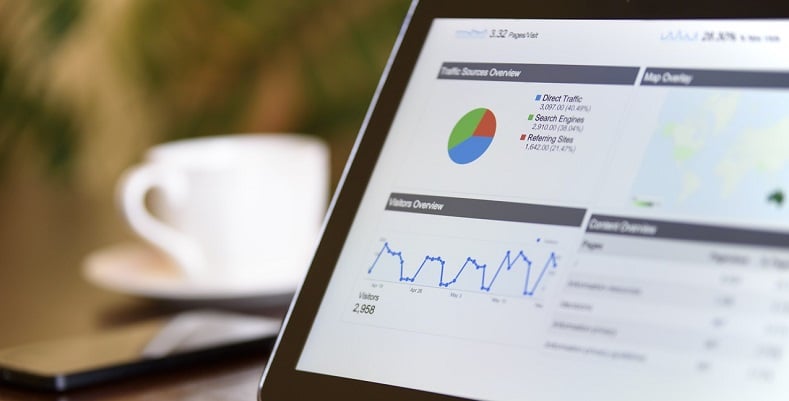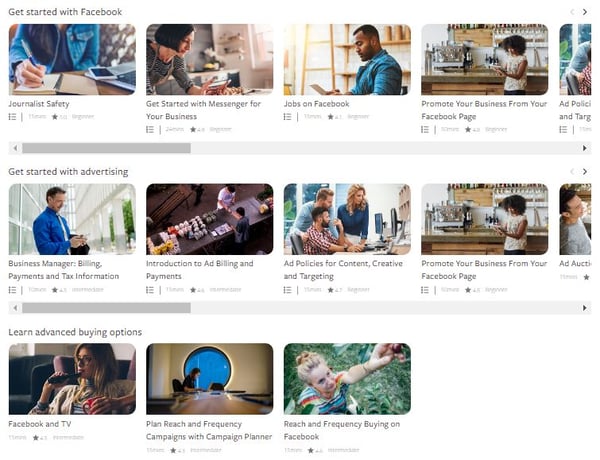How to Write Effective Ad Copy That Generates Real Customers


If you've dabbled in social or paid search advertising, you understand how much of a rabbit hole it can be. A powerful little rabbit hole! But an ever-changing, complex one.
At their core, these types of ads need to have the right messaging hitting the right people at the right time. You can control much of this process and learn through testing--and this post will hopefully serve as a solid guide to writing more effective, conversion-driven ad copy.
There are 3 main actions I'm going to walk through today that can help you ensure that you're seeing real ROI on your social and paid search campaigns:
- Closed-loop reporting to track ROI
- Targeted messaging
- A willingness to fail
Ready? Break:
Have a closed-loop reporting system already in place.
There's an important question you must start with to understand how your ad copy generates real customers:
How will you know if your ad even drove customers if you're not even tracking what efforts drive customers?
To measure the effectiveness of your digital marketing, you'll need to have a closed-loop reporting system in place to track the data on visits, lead source, conversions, and customer-generation. Now, this post is not going to head off on a tangent of evaluating and choosing CRMs (plus there are already some great resources that do this)--but we would always recommend Salesforce or the HubSpot CRM.
Combine this with reporting platforms like Databox (it's free to start now!) or Grow, and you've got yourself a pretty powerful ROI-reporting dashboard system that can easily show you where your customers are coming from.
Note: if you're a Salesforce or HubSpot CRM user, you likely also have some native dashboards that can help you do simple closed-loop reporting on a source like paid social advertising.
Focus on your buyer personas, their stage in the buyer's journey, and their pain points.
Once you have a closed-loop reporting system in place, it's time to actually draft copy for your ads that does a few things well:
-
Speaks directly to your buyer personas' pain points
-
Clarifies your product or service as the solution to those pain points
-
Entices them to click to read more information
A really incredible way to do this is to do a quick interview with a current customer who found you in a way other than personal networking (organic traffic, previous ad, mention in a PR effort, etc.)
Ask what captured their audience, why they pursued your product or service, and what made you stand apart. Then, use these as the baseline ideas for what resonates with your existing customers to find other customers like them.
Here's a before-and-after example of an ad we typically see clients want to run:
Before:
Free Webinar: Fire Suppression
Overview of Clean Agent Fire Suppression Systems, 4 Days Left to Register.
After:
Is your facility compliant in 2019?
Attend this lunch-hour webinar on clean agent systems in the Midwest. Save your virtual spot now.
We made these few changes that helped us see much more impactful results and registrations: first-person language, calling out pain points to get their attention, showing offer specifics before they even click, and offering an easy next step.
We also made sure we were targeting our key buyer personas in the ad target to make it more closely match our ad copy. Since this was an Awareness Stage webinar, we broadened up our audience to include anyone interested in keywords--not just our company. And because this webinar is specifically geared toward the Midwest, we were able to add a geotarget that also narrowed in on more qualified eyeballs.
Test, test, and test again.
My closing piece of advice in creating more effective ad copy is pretty simple: Don't be afraid of the multivariate tools in your ad platform that can help you easily carousel messaging, images, etc. While they may look a bit intimidating, carousel-ing a few header copies or images is actually quite easy, especially in platforms like Facebook.
You can set timelines of how long you'd like to run your tests, when to choose a winner, or just monitor them manually each day if you've set a daily budget you're not afraid of spending on helpful tests. Facebook actually has hundreds of hours of free online courses--in its Facebook Blueprint--to teach you exactly how to set up and run these tests.

Just be aware: if you start to test both your ad copy/images and your audience, you won't be able to tell which is under- or over-performing.
Try testing variations of your copy and images with the same audience over a period of at least a week to get some reliable data, and then use your winning variation to then test some audience segments.
If you're at a loss for the next steps to take, how to get your team on-board with sharper, more effective paid media, or still looking for a partner, don't afraid to start up a conversation with the Revenue River team. We're here to help.
